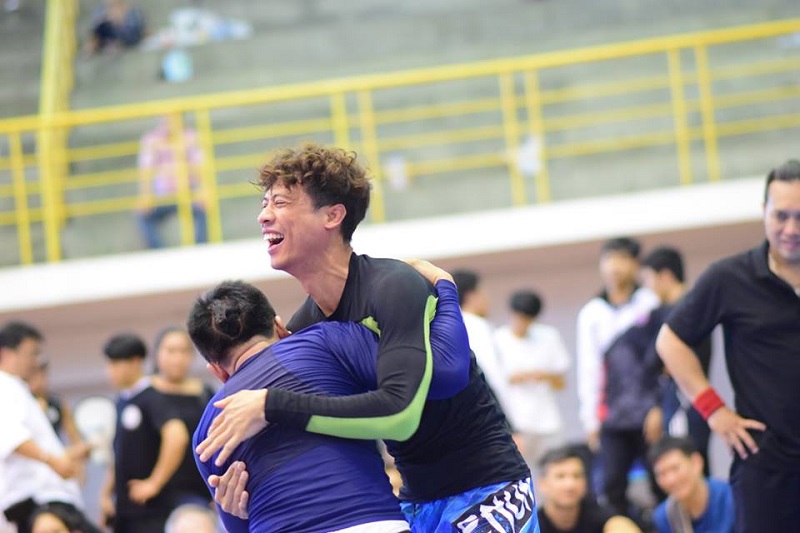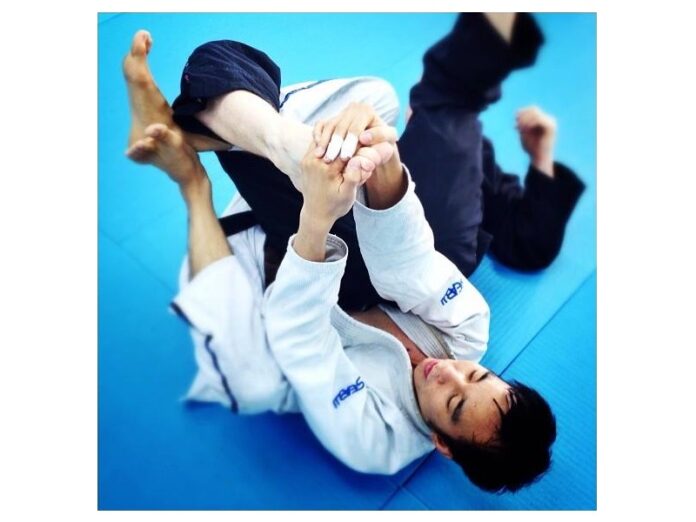
Having been sexually harassed in the past, learning Brazilian Jiu Jitsu, or BJJ, at 34 has empowered me. BJJ, focuses on how to escape from an attacker in a dominant position on the ground, so I am able to learn how to escape from a mount or a side control position under the pressure of strong and heavy bodies.

Designed to benefit those of a physically weaker build through the strategic application of pressure, locks, and chokeholds, BJJ is a particularly advantageous martial art for women. I set out to explore the development of this martial art first brought to Thailand 15 years ago, and asked professionals about their views on its usefulness against sexual assault.
“Learning Brazilian Jiu Jitsu will protect you 100 percent against rape situations,” said Niti, Techottiasnee, 42, the only Thai BJJ black belt and owner of Executive Martial Arts Center.
However, not all experts view BJJ’s usefulness in the same light. Phil Denzau, a black belt in his late 40s who studied under prominent martial artist Mauricio Tinguinha, said that a girl may be faced with a drunken assailant with immunity to pain. Under these circumstance, he does not believe BJJ can completely protect women against sexual assault until they train consistently for at least four years.
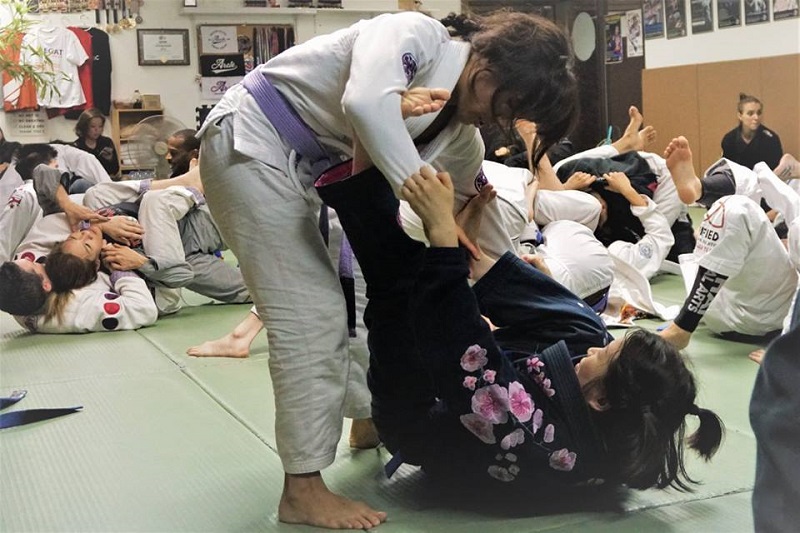
“I believe BJJ can help you physically be more prepared to defend yourself without a doubt,” said Denzau, who currently teaches at Raw BJJ in Thailand, “but I just realistically advise there are very violent people in the world that don’t have the same value structure or thought process as normal people.”
Denzau added that self-defence doesn’t involve only the physical aspects but non physical aspects such as avoiding dangerous situations or places, how to de-escalate conflict, and awareness of the environment one is in.
In real life, it is advised to always escape in a dangerous situation where someone is trying to cause pain. In BJJ, you are encouraged to say “tap” if you realize someone will hurt you, but in real life there is no such a thing as tapping.
“We never get into fights,” said Pat Aphaisuwan, 37, a brown belt who has trained under martial artist Charles Gracie in California, “because we have the right mentality that there are better ways to deal with things other than fighting.”
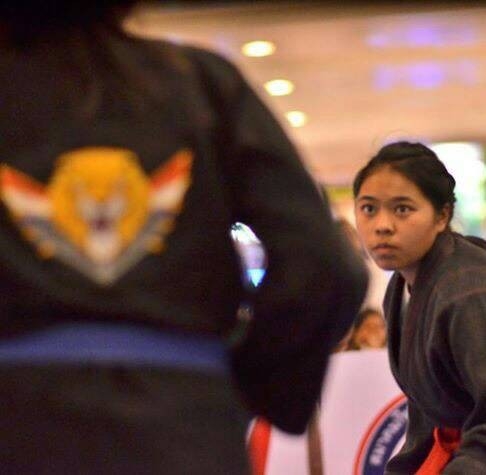
Navanapast Suraratrungsri gauges her competitor before a fight.
Kaori Tajima, 46, a blue belt training at Arete Brazilian Jiu Jitsu, recounted a time when a man tried to enter her apartment, but ran out of the apartment instead of fighting fearing he may have had a knife.
“I’ve learned Muay Thai for over 10 years, MMA for seven years and Jiu-Jitsu for three and a half years, but I don’t feel safer now than I did before,” Kajima said.
As Denzau said, Brazilian Jiu Jitsu is not a foolproof way against being attacked, but only a tool for fighting.
Still, BJJ is able to offer a sense of security for women.
Elina Moestam, 25, a purple belt from Sweden, who competed in Naka No Gi Tournament in Thailand during her vacation this year, said she feels safer in the streets.
“At night, when some stranger is walking behind me, I now feel more secure.” Moestam said.
Even young girls are able to defend themselves in schools where bullying is common. Navanapast Suraratrungsri, 14, who has been practicing BJJ for one year said that once a classmate jerked her shirt, she was able to control the situation and defend herself.
BJJ was brought to Thailand in 2002 by Thais who had trained abroad and by foreigners who settled in Thailand.
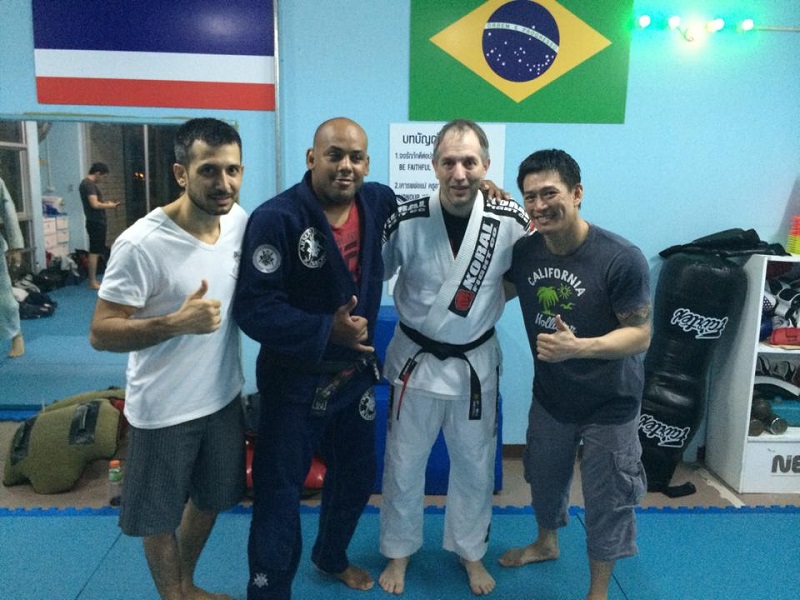
“BJJ is spreading more to the middle class,” said Denzau, although he believes Thailand still has much to do in spreading the martial art especially into suburban areas.
BJJ was developed by Mitsuyo Mayeda, a disciple of judo founder Jigoro Kano, who then took the martial art to Brazil. There, he taught the Gracie family, starting with Carlos and Helio Gracie, who later adapted it to suit people of smaller and weaker stature. I garnered fame when Royce Gracie beat many competitors of much larger build during an Ultimate Fighting Championship, or UFC, tournament in 1990.
“I knew it was the real deal,” said Denzau, which started him on the BJJ lifestyle.
It typically takes three or four years for someone to get a blue belt in BJJ, and around ten or more to get a black belt. Many drop out of class due to accidental injuries experienced during BJJ training. Others drop out when things get difficult.
“Some people cannot stand it if someone is better than them or if others are developing faster than they are,” said Denzau.
But BJJ also seems to weave a tightly knit group of people who revere the discipline and who vow to stay in the arts for life. Relationships are intricately woven through the fact that necks are borrowed for simulated choking, arms are borrowed to break, and legs borrowed to bend.
Denzau said that his friendships started at BJJ have lasted 12 years and are still going strong.
With women as likely to get involved as men, there’s a debate over how important a role raw physical strength plays.
Phil said people with more athleticism and strength are likely to have more advantages in BJJ, while the weak ones need to develop more sophisticated techniques.
But Pat differed slightly in opinion, showing the essence of why the martial art is so advantageous to women.
“BJJ is an art that uses technique,” Pat said while training. “If you’re feeling exhausted and using too much strength, you’re doing it wrong.”
